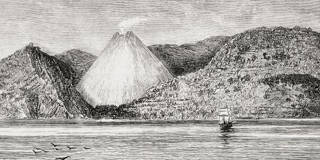After the American missionary John Allen Chau ignored successive warnings, the isolated Sentinelese people killed him. But the threat the world's isolated tribes face is far from neutralized, as some have taken Chau’s death as an opportunity to argue that policies protecting them should be reversed.
NEW DELHI – The remote, coral-fringed North Sentinel Island made headlines late last year, after an American Christian missionary’s covert expedition to convert its residents – the world’s last known pre-Neolithic tribal group – ended in his death. The episode has cast a spotlight on the threats faced by the world’s remote indigenous groups, which are already on the brink of disappearance.
The Sentinelese people targeted by the slain evangelist John Allen Chau are probably the most isolated of the world’s remaining remote tribes, and they are keen to stay that way. They shoot arrows to warn off anyone who approaches their island, and attack those, like Chau, who ignore their warnings.
It was not always this way. When Europeans first made contact with the Sentinelese, the British naval commander Maurice Vidal Portman described them in 1899 as “painfully timid.” But the profound shift is not hard to explain. Tribes like the Sentinelese have learned to associate outsiders with the ghastly violence and deadly diseases brought by European colonization.

NEW DELHI – The remote, coral-fringed North Sentinel Island made headlines late last year, after an American Christian missionary’s covert expedition to convert its residents – the world’s last known pre-Neolithic tribal group – ended in his death. The episode has cast a spotlight on the threats faced by the world’s remote indigenous groups, which are already on the brink of disappearance.
The Sentinelese people targeted by the slain evangelist John Allen Chau are probably the most isolated of the world’s remaining remote tribes, and they are keen to stay that way. They shoot arrows to warn off anyone who approaches their island, and attack those, like Chau, who ignore their warnings.
It was not always this way. When Europeans first made contact with the Sentinelese, the British naval commander Maurice Vidal Portman described them in 1899 as “painfully timid.” But the profound shift is not hard to explain. Tribes like the Sentinelese have learned to associate outsiders with the ghastly violence and deadly diseases brought by European colonization.